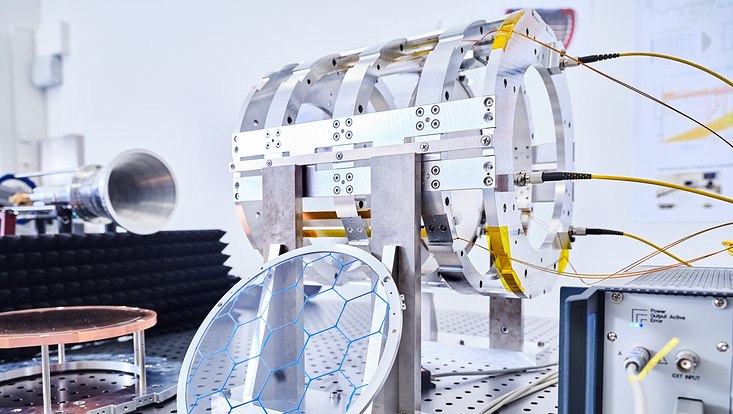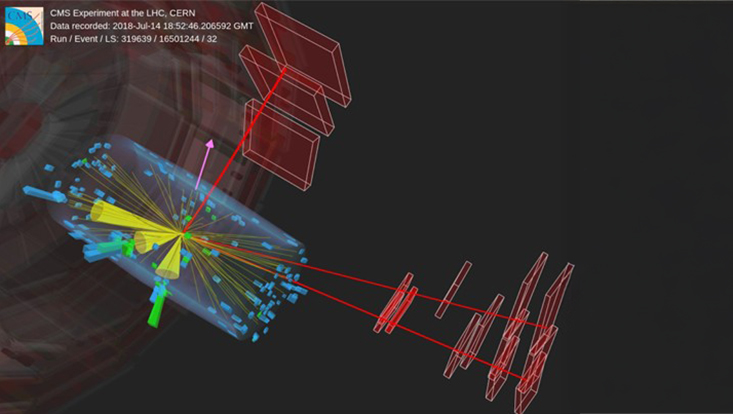Best Paper Awards 2023Axion haloscope signal power from reciprocity
18 April 2023

Photo: Jens Ruessmann
More and more experiments are searching for axions, hypothetical particles that are candidates for dark matter. A recent Quantum Universe paper developed a new approach to calculate the expected sensitivity to dark matter axions for a wide range of current and future experiments.
Axions are particles initially hypothesized to explain why the strong interaction obeys a certain symmetry that one would expect to be broken. This mystery is known as the Strong CP Problem. It was quickly realized that if axions exist, they could also function as dark matter, another unsolved mystery of fundamental physics. Experiments that search for dark matter in the form of axions are known as axion haloscopes. The basic idea is to convert dark matter axions that constantly pass through everything on Earth into photons that can then be detected.
These axion conversions will happen, if at all, incredibly rarely; thus, no haloscope has discovered the axion so far. To at least narrow the search for future experiments, it is crucial to know the expected signal strength of the haloscope for particular axion parameters to exclude these from not observing a signal. This new approach does precisely this for current experiments and untried designs that deviate from the traditional detection strategy. It does so by considering a test signal that can be introduced into the haloscope. From this test signal, one can then calculate the sensitivity to the "real" axion signal even if one does not detect anything. The novelty and strength of this approach are that this test signal can be completely different from the real one. Reciprocity, which allows switching between different signal sources, is the key ingredient to make this method effective. Especially open haloscope designs like BRASS and MADMAX, two experiments supported by Quantum Universe, benefit from this reciprocity approach. Both BRASS and MADMAX study the experiment with test signals that are necessarily different from the axion signal. How to use the reciprocity approach "in the field" is currently being investigated experimentally on a small MADMAX test setup in the Shielded Experimental Hall (SHELL) on Campus Bahrenfeld.
Original Publication
J. Egge, “Axion haloscope signal power from reciprocity,” accepted by JCAP.
The publication was awarded with the Best Paper Award 2023.


